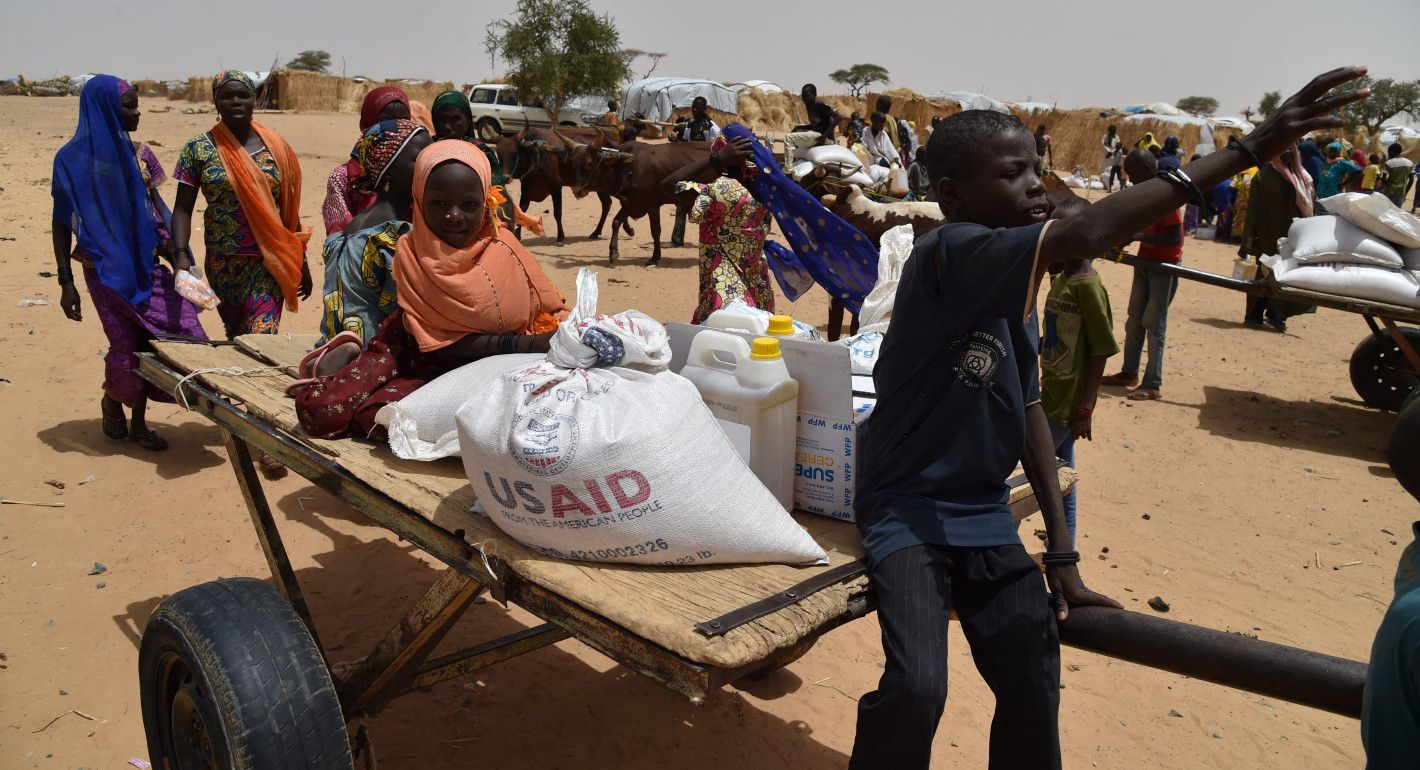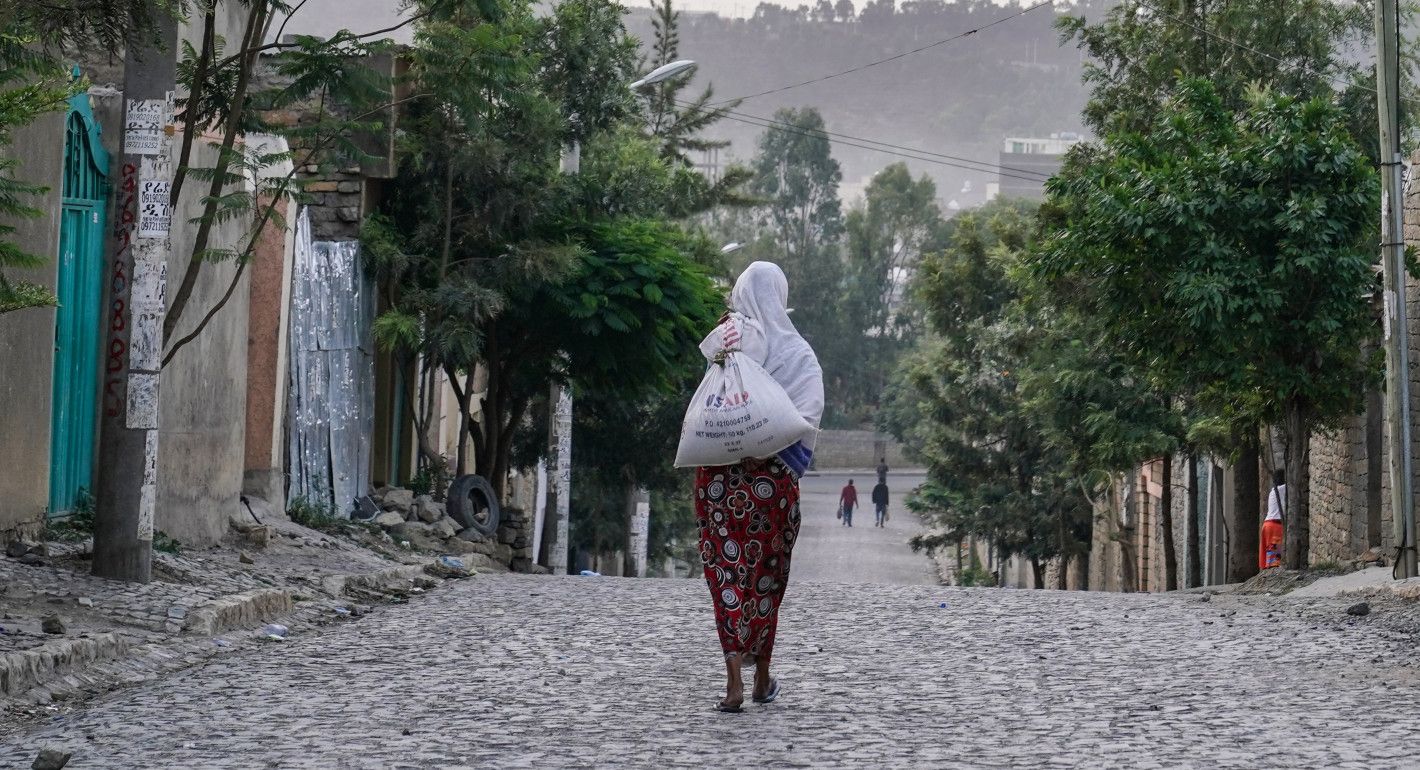These days, Washington is located in the policy equivalent of Tornado Alley, battered by a barrage of disorienting and norm-shattering executive orders that promise to upend eight decades of U.S. internationalism. Policy analysts have become storm-chasers, tracking down the latest provocation in the hopes of answering a basic question: Just what is the White House hoping to accomplish with all this chaos?
No recent move tells us more about President Donald Trump and his administration’s disdain for America’s global reputation than their reckless (and arguably illegal and unconstitutional) effort to dismantle the U.S. Agency for International Development (USAID) without legislative approval. The episode reveals the transactional nihilism at the heart of Trump’s foreign policy, which recognizes no positive purpose for the United States in world affairs. Americans themselves will reap the damage from these misguided decisions.
In recent days, the Trump administration has moved aggressively to shut down USAID as an independent agency and integrate whatever remains into the State Department. Elon Musk, head of the White House’s Department of Government Efficiency and a man with no expertise in global development, dismissed USAID as a “criminal organization. Time for it to die.”
Trump’s choice of messenger was striking and perverse. The world’s wealthiest person, with a net worth of $421.6 billion, has moved to shutter a venerable agency that devotes its comparatively modest $42.45 billion annual budget to alleviating poverty, combating hunger, providing shelter, fighting disease, expanding education, and promoting good governance around the world. USAID is a life-saving organization—and one that pays huge dividends in building goodwill for the United States. If the agency dies, so will many innocent people. And so will the still-lingering reputation of the United States as a country that takes an enlightened view of its own self-interest and stands for more than just itself in world affairs.
The antecedents of USAID date to the early Cold War, when the United States competed with the Soviet Union to win support from developing and postcolonial nations. In his 1949 inaugural address, then president Harry S. Truman outlined four priorities of U.S. foreign policy. The last of these was “a bold new program for making the benefits of our scientific advances and industrial progress available for the improvement and growth of underdeveloped areas.” The Point Four Program, as it quickly became known, was intended to improve living conditions for half the world’s population and to counter communist propaganda by showing what free societies could deliver.
Twelve years later, President John F. Kennedy signed into law the Foreign Assistance Act of 1961. Pursuant to that legislation, Kennedy issued an executive order creating USAID, with a mandate to focus on long-term economic and social development. Over the ensuing decades, USAID has repeatedly reinvented itself, expanding its activities and approaches in response to shifts in administrations, new congressional mandates, and evolving global challenges from food insecurity to climate change. It has not always gotten things right, nor has it had the statutory flexibility to engage in bold experimentation. But it has contributed to humanity’s extraordinary progress in poverty reduction, increased life expectancy, better health, improved literacy, and so much more. The agency’s 10,000-strong U.S. workforce and its thousands of foreign nationals working abroad have much to be proud of.
Despite this track record, USAID has always been an irresistible and vulnerable target for conservative nationalists. This is partly because it lacks an obvious domestic constituency. Unlike the Department of Defense, USAID cannot boast an extensive network of military installations and defense contractors spanning countless congressional districts. And most of the assistance it provides is much more loosely tied, in the public mind, to concrete U.S. national interests. Seventy-five years after Republican and former senator Robert Taft of Ohio blasted foreign aid as “pouring money down a rathole,” his critique still resonates.
Enduring misconceptions about the magnitude of U.S. foreign aid also undercut domestic support. Opinion polls have repeatedly shown that the public estimates that 25 percent of the federal budget goes to foreign assistance and that they would prefer this to be 10 percent. The actual figure is below 1 percent, or less than a penny on the federal dollar. And although the United States is the world’s leading provider of bilateral development assistance, by virtue of its massive economy, it ranks near the bottom of all donors on a per capita basis. The Trump administration has exploited these misperceptions, misleadingly arguing that massive resources are at stake and that other wealthy countries are shirking their own duties.
A second misconception pertains to the composition of and diverse rationales for U.S. assistance. “Foreign aid” is a blanket term that encompasses several categories, including bilateral development aid, military assistance, humanitarian aid, strategic aid, nonmilitary security aid (such as counternarcotics or counterterrorism), and multilateral development aid.
USAID and the State Department jointly administer the vast majority of nonmilitary aid.
The top recipient of foreign assistance funds in 2023, far and away, was Ukraine, with $16 billion. Outside a few U.S. strategic partners in the Middle East, including Israel, Jordan, and Egypt, most of the remaining U.S. aid outlays are directed toward sub-Saharan Africa—home to the world’s fastest growing population, and a region for which Trump has previously expressed disdain. (These data came from the comprehensive and invaluable Foreign Assistance dashboard, which is jointly managed by the State Department and USAID.)
The Trump administration’s animus toward foreign aid falls heaviest on activities at the core of USAID’s mandate: namely, support for long-term development objectives. Some of this hostility reflects anger at USAID’s perceived inordinate focus on hot-button topics for the right wing, such as gender and climate change. But their critique of development assistance is actually much broader. They claim that such aid is a giveaway of taxpayer money to corrupt foreign governments, is invariably ineffective, and must be replaced by a geopolitical approach that targets aid to strategic U.S. allies. None of these arguments is convincing.
To begin with, only a tiny share of U.S. development aid goes to foreign governments. Most of it is implemented by civil society actors, the private sector, and multilateral organizations. Moreover, a significant proportion is actually spent in the United States, supporting U.S.-based contractors and implementers.
Second, development programs can work, provided they are well-designed to align with local priorities and empower local partners, are harmonized with efforts by other donors, and are subjected to monitoring, evaluation, and learning. For example, the President’s Emergency Plan for AIDS Relief, or PEPFAR, has saved more than 25 million lives over two decades since being launched by then president George W. Bush. Development aid is even more effective when channeled multilaterally, as through the World Bank.
Third, the impulse to adopt a purely geostrategic stance toward foreign aid—using it solely to support or prop up friendly governments—is both strategically and morally myopic. It may allow Washington to curry favor with and bolster problematic partners in the short run, but over the long term, it often subsidizes dysfunctionality and creates headaches. It also breeds cynicism, by exposing the distance between espoused U.S. ideals and actual practice. This may not matter, of course, to right-wing advocates of an amoral U.S. foreign policy. But to those who believe in leavening U.S. hard power with soft power, it should matter a great deal.
The notion of slashing and refocusing foreign aid is not a new one for Trump. In his first budget to Congress in 2018, the president proposed cutting aid by a third. Speaking to the UN General Assembly later that year, he explained why: “Moving forward, we are only going to give foreign aid to those who respect us and, frankly, are our friends.” Fortunately for developing countries and U.S. interests, Congress rejected draconian cuts, thanks to the presence of traditional GOP internationalists such as Senator Bob Corker of Tennessee.
Today, these restraints are gone. By law, any dismantling of USAID requires the explicit agreement of Congress, but Corker and many of his like-minded legislators have left office, and their successors have remained silent as Trump appears to be using executive power in legally dubious ways. On Monday, Trump appointed Secretary of State Marco Rubio as acting administrator of what remains of USAID. In a terse press release, the State Department explained that the agency “has long strayed from its original mission of responsibly advancing American interests abroad.” It pledged a thorough review to “ensure that [USAID] is in alignment with an America First agenda.”
Considered in isolation, the idea of incorporating USAID into the State Department is certainly a legitimate topic of debate. Other friendly governments, including the United Kingdom and Australia, have brought previously independent development ministries and their aid activities into their foreign ministries. During its second term, the administration of George W. Bush toyed with this very option, before ultimately creating a State Department Office of Foreign Assistance to improve aid coherence across agencies.
But what is more concerning is the Trump administration’s sweeping dismissal of the very rationale for development assistance. Such foreign aid is deeply in the U.S. national interest, since it helps to build stable states and resilient societies. Increasingly, the world’s poor are concentrated in forty-odd fragile and conflict-affected states. By helping improve governance, advance economic opportunity, and meet basic human needs, development assistance can reduce the prospect of negative cross-border spillovers, whether in the form of political extremism, violent conflict, uncontrolled migration, infectious disease, or illicit trafficking. As former defense secretary Robert Gates and other national security officials have recognized, advancing U.S. security in an age of global risks requires robust funding for civilian agencies—in effect, giving development and diplomacy the same attention as defense.
There is no question that U.S. aid policy—and USAID—needs reform. Among other shortcomings, U.S. development aid remains too modest in size, too tied to purchases of U.S. goods and services, too dispersed across projects, too earmarked by Congress, too fragmented across U.S. agencies, and too focused on bilateral rather multilateral channels. It is also inadequately linked to other policy instruments that can advance (or impede) development, including U.S. trade, investment, migration, security, environmental, and technology policies. But these are all arguments for ramping up U.S. development efforts, coordinating these across U.S. agencies, and harmonizing with other governments and international organizations—the precise opposite of the administration’s slash-and-burn approach to development aid.
The United States has an enduring strategic, economic, and humanitarian interest in fostering good governance, economic opportunity, social welfare, and human dignity abroad. In its assault on USAID, the Trump administration is turning its back on the world, indifferent to the suffering it will inflict and the blowback the United States will inevitably experience when the world’s problems wash up on its shores.
Emissary
The latest from Carnegie scholars on the world’s most pressing challenges, delivered to your inbox.







